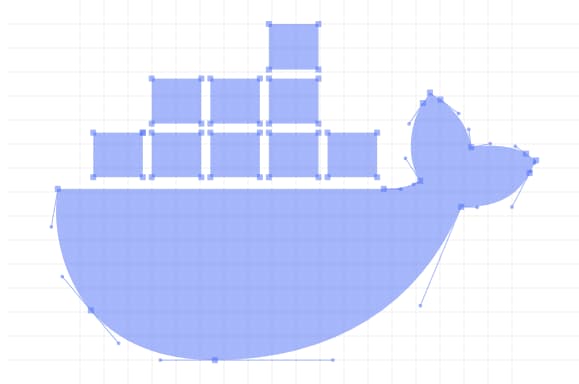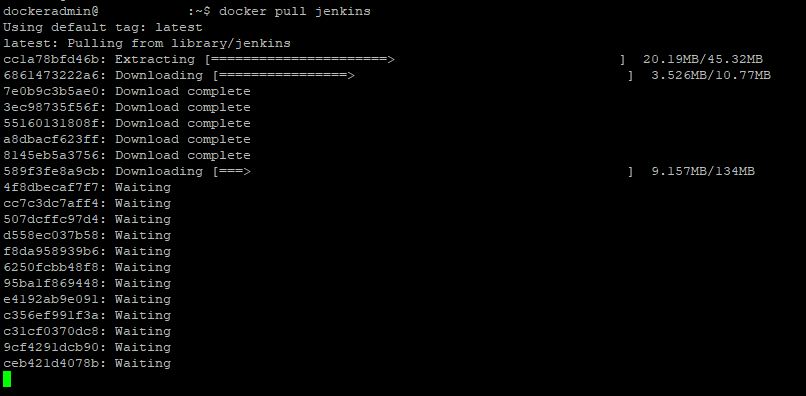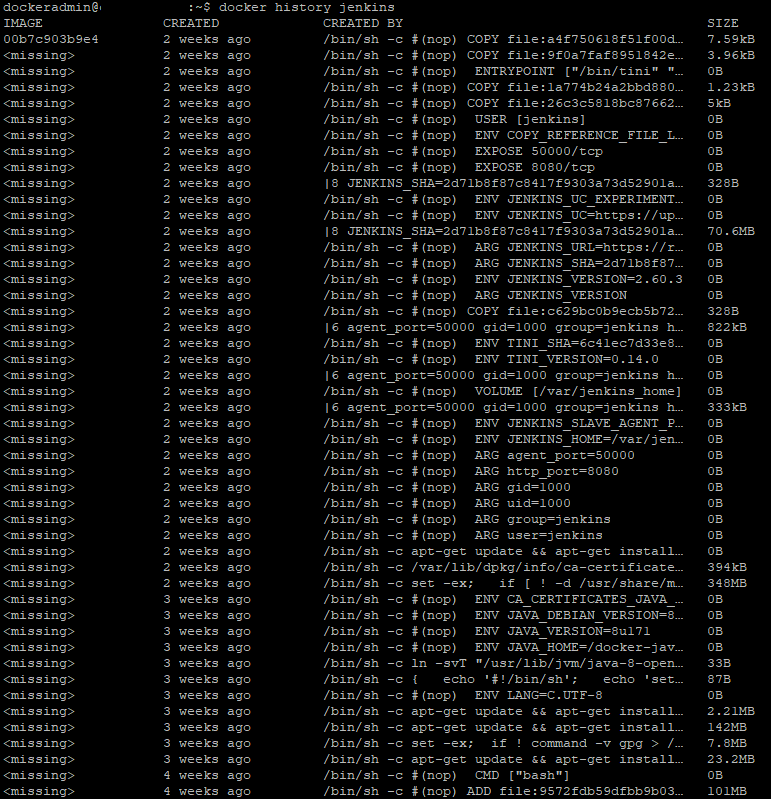Docker 101

This isn’t a “What is Docker?” post; you can find those everywhere, written by people who understand it, and can explain it, much better than I. This is a quick & dirty “get-it-running” primer.
A Docker image consists of a “base layer” (usually a slimmed down version of Linux, or Windows) and software additions/modifications layered on top.
I’ll use Jenkins as a working example. To download the Jenkins image from the Docker store:
docker pull jenkins
To list all the images that exist on the docker host:
docker image ls
To show the various software layers that make up the image (starting with the base image, and subsequent changes layered on top):
docker jenkins history
Now, an image, by itself, isn’t useful until it runs.
To create a new container (an instance) of the jenkins image with a randomly-generated friendly name:
docker run jenkins
 At this point, I could point my browser to http://xx.xx.xx.xx:8080 and I’d be browsing the Jenkins DevOps tool!
At this point, I could point my browser to http://xx.xx.xx.xx:8080 and I’d be browsing the Jenkins DevOps tool!
To list all containers (running or not):
docker container ls -a
In my screenshot, “thirsty_wozniak” was randomly generated. To stop that container:
docker stop thirsty_wozniak
To start it back up:
docker start thirsty_wozniak
Congratulations, you passed Docker 101. Docker 102 is taught by a [different instructor](https://lmgtfy.com/?q=What can I do with Docker?):)


